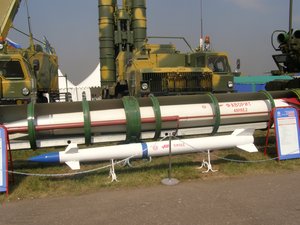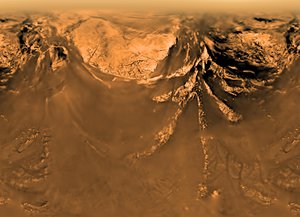- published: 06 Mar 2016
- views: 14078
-
remove the playlistDinoflagellate
- remove the playlistDinoflagellate
- published: 01 Dec 2011
- views: 178834
- published: 11 Dec 2010
- views: 21313
- published: 04 Mar 2013
- views: 8909
- published: 18 Dec 2015
- views: 8883
- published: 23 Feb 2016
- views: 1338
- published: 15 Feb 2016
- views: 565
- published: 10 Jan 2014
- views: 524

Dinoflagellate
The dinoflagellates (Greek δῖνος dinos "whirling" and Latin flagellum "whip, scourge") are a large group of flagellate protists that constitute the phylum Dinoflagellata. Most are marine plankton, but they are common in fresh water habitats as well. Their populations are distributed depending on temperature, salinity, or depth. Many dinoflagellates are known to be photosynthetic, but a large fraction of these are in fact mixotrophic, combining photosynthesis with ingestion of prey (phagotrophy). In terms of number of species, dinoflagellates form one of the largest groups of marine eukaryotes, although this group is substantially smaller than the diatoms. Some species are endosymbionts of marine animals and play an important part in the biology of coral reefs. Other dinoflagellates are colorless predators on other protozoa, and a few forms are parasitic (see for example Oodinium, Pfiesteria). Some dinoflagellates produce resting stages, called dinoflagellate cysts or dinocysts, as part of their life cycles.
This article is licensed under the Creative Commons Attribution-ShareAlike 3.0 Unported License, which means that you can copy and modify it as long as the entire work (including additions) remains under this license.
- Loading...

-
 7:11
7:11Dinoflagellates: Identification and Tips
Dinoflagellates: Identification and Tips -
 2:16
2:16Bioluminescent Waves Explained
Bioluminescent Waves ExplainedBioluminescent Waves Explained
Multiple videos of bioluminescent waves off the coast of California have us wondering: What kind of otherworldly phenomenon is this? To find out, Jorge Ribas talks to a marine biologist. -
 2:19
2:19GYMNODINIUM DINOFLAGELADO DINOFLAGELLATE
GYMNODINIUM DINOFLAGELADO DINOFLAGELLATEGYMNODINIUM DINOFLAGELADO DINOFLAGELLATE
Los Dinoflagelados corresponden al la clase Dinophyceae, orden Peridiniales, se caracterizan por la presencia de dos surcos, uno transversal y otro logitudinal. En cada uno de ellos se halla un flagelo. El flagelo transversal es solo visible a traves del microscopio electronico El flagelo longitudinal ( el que observamos en el video ) sobresale de la celula Los movimientos circulares y a saltos, caracteristicos de los diniflagelados, se consigue con la acción conjunta de los dos flagelos The Dinoflagellates correspond to the class Dinophyceae, Peridiniales order, are characterized by the presence of two rows, one transverse and one longitudinal. In each of these is a scourge. The transverse flagellum is visible only through electron microscopy The longitudinal flagellum (which we see in the video) protruding from the cell Circular motions and jumps, characteristic of diniflagelados, is achieved by the joint action of two flagella -
 6:41
6:41NEET BIO - Kingdom Protista, dinoflagellates.
NEET BIO - Kingdom Protista, dinoflagellates.NEET BIO - Kingdom Protista, dinoflagellates.
This video describes about general characteristics of Dinoflagellates, is a well defined group of unicellular, golden brown photosynthetic organisms. -
 0:47
0:47Peridinium - Dinoflagellate
Peridinium - Dinoflagellate -
 1:24
1:24Bioluminescent Plankton plancton lumineux Pyrocystis / dinoflagellates
Bioluminescent Plankton plancton lumineux Pyrocystis / dinoflagellatesBioluminescent Plankton plancton lumineux Pyrocystis / dinoflagellates
Pyrocystis is a bioluminescent unicellular algae. At night, it reacts to the agitation of the water by producing some light thanks to a biochemical reaction between the luciférine and the luciférase. -
 0:47
0:47Dinoflagellate Bioluminescence
Dinoflagellate BioluminescenceDinoflagellate Bioluminescence
Bioluminescence of the dinoflagellate Pyrocystis fusiformis stimulated by hand. See more at https://scripps.ucsd.edu/labs/mlatz/ -
 7:15
7:15Euglenoids, Dinoflagellates and Diatoms
Euglenoids, Dinoflagellates and DiatomsEuglenoids, Dinoflagellates and Diatoms
Biology_b-k-protista-6.mp4 -
 1:01
1:01Dinoflagellate
DinoflagellateDinoflagellate
Whipping of flagella Tags: dinoflagellate, marine, microscope, protist, dinoflagellate (organism classification), biology, glowing, fish, tank, glowing algae, cool biology, glowworm (organism classification), glowing plankton, flourescent plankton, dino pet, dinopet, dinos, steven lang, stevenlovesscience, steven loves science, glowing plants, glowing animals, security alarm (invention), algae, bioluminescence, pond life, tucsen microscope camera, finoflagella, dinoflagellates, burglar alarm hypothesis, red tide, fishtank, saltwater, marine aquarium, reef tank, tides, red, blooms, algal, oceanography -
 0:56
0:56Ceratium hirudinella, a freshwater dinoflagellate
Ceratium hirudinella, a freshwater dinoflagellateCeratium hirudinella, a freshwater dinoflagellate
Ceratium hirudinella: the flattened shape and horns of this dinoflagellate can be seen in this movie of live cells rotating as they swim along. From a pond at Pitsford Water, Northamptonshire, UK The Freshwater Algal Flora of the British Isles 2nd edn (2011), p. 262, pl. 67E (p. 263) http://www.algaebase.org/search/species/detail/?species_id=30383
-

-

Bioluminescent Waves Explained
Multiple videos of bioluminescent waves off the coast of California have us wondering: What kind of otherworldly phenomenon is this? To find out, Jorge Ribas talks to a marine biologist.
published: 01 Dec 2011 -

GYMNODINIUM DINOFLAGELADO DINOFLAGELLATE
Los Dinoflagelados corresponden al la clase Dinophyceae, orden Peridiniales, se caracterizan por la presencia de dos surcos, uno transversal y otro logitudinal. En cada uno de ellos se halla un flagelo. El flagelo transversal es solo visible a traves del microscopio electronico El flagelo longitudinal ( el que observamos en el video ) sobresale de la celula Los movimientos circulares y a saltos, caracteristicos de los diniflagelados, se consigue con la acción conjunta de los dos flagelos The Dinoflagellates correspond to the class Dinophyceae, Peridiniales order, are characterized by the presence of two rows, one transverse and one longitudinal. In each of these is a scourge. The transverse flagellum is visible only through electron microscopy The longitudinal flagellum (which we...
published: 11 Dec 2010 -

NEET BIO - Kingdom Protista, dinoflagellates.
This video describes about general characteristics of Dinoflagellates, is a well defined group of unicellular, golden brown photosynthetic organisms.
published: 04 Mar 2013 -

-

Bioluminescent Plankton plancton lumineux Pyrocystis / dinoflagellates
Pyrocystis is a bioluminescent unicellular algae. At night, it reacts to the agitation of the water by producing some light thanks to a biochemical reaction between the luciférine and the luciférase.
published: 18 Dec 2015 -

Dinoflagellate Bioluminescence
Bioluminescence of the dinoflagellate Pyrocystis fusiformis stimulated by hand. See more at https://scripps.ucsd.edu/labs/mlatz/
published: 23 Feb 2016 -

-

Dinoflagellate
Whipping of flagella Tags: dinoflagellate, marine, microscope, protist, dinoflagellate (organism classification), biology, glowing, fish, tank, glowing algae, cool biology, glowworm (organism classification), glowing plankton, flourescent plankton, dino pet, dinopet, dinos, steven lang, stevenlovesscience, steven loves science, glowing plants, glowing animals, security alarm (invention), algae, bioluminescence, pond life, tucsen microscope camera, finoflagella, dinoflagellates, burglar alarm hypothesis, red tide, fishtank, saltwater, marine aquarium, reef tank, tides, red, blooms, algal, oceanography
published: 15 Feb 2016 -

Ceratium hirudinella, a freshwater dinoflagellate
Ceratium hirudinella: the flattened shape and horns of this dinoflagellate can be seen in this movie of live cells rotating as they swim along. From a pond at Pitsford Water, Northamptonshire, UK The Freshwater Algal Flora of the British Isles 2nd edn (2011), p. 262, pl. 67E (p. 263) http://www.algaebase.org/search/species/detail/?species_id=30383
published: 10 Jan 2014
Dinoflagellates: Identification and Tips
- Order: Reorder
- Duration: 7:11
- Updated: 06 Mar 2016
- views: 14078
Bioluminescent Waves Explained
- Order: Reorder
- Duration: 2:16
- Updated: 01 Dec 2011
- views: 178834
- published: 01 Dec 2011
- views: 178834
GYMNODINIUM DINOFLAGELADO DINOFLAGELLATE
- Order: Reorder
- Duration: 2:19
- Updated: 11 Dec 2010
- views: 21313
- published: 11 Dec 2010
- views: 21313
NEET BIO - Kingdom Protista, dinoflagellates.
- Order: Reorder
- Duration: 6:41
- Updated: 04 Mar 2013
- views: 8909
- published: 04 Mar 2013
- views: 8909
Peridinium - Dinoflagellate
- Order: Reorder
- Duration: 0:47
- Updated: 29 Oct 2011
- views: 11543
Bioluminescent Plankton plancton lumineux Pyrocystis / dinoflagellates
- Order: Reorder
- Duration: 1:24
- Updated: 18 Dec 2015
- views: 8883
- published: 18 Dec 2015
- views: 8883
Dinoflagellate Bioluminescence
- Order: Reorder
- Duration: 0:47
- Updated: 23 Feb 2016
- views: 1338
- published: 23 Feb 2016
- views: 1338
Euglenoids, Dinoflagellates and Diatoms
- Order: Reorder
- Duration: 7:15
- Updated: 21 Nov 2016
- views: 1212
Dinoflagellate
- Order: Reorder
- Duration: 1:01
- Updated: 15 Feb 2016
- views: 565
- published: 15 Feb 2016
- views: 565
Ceratium hirudinella, a freshwater dinoflagellate
- Order: Reorder
- Duration: 0:56
- Updated: 10 Jan 2014
- views: 524
- published: 10 Jan 2014
- views: 524

- Playlist
- Chat

- Playlist
- Chat

Dinoflagellates: Identification and Tips
- Report rights infringement
- published: 06 Mar 2016
- views: 14078

Bioluminescent Waves Explained
- Report rights infringement
- published: 01 Dec 2011
- views: 178834

GYMNODINIUM DINOFLAGELADO DINOFLAGELLATE
- Report rights infringement
- published: 11 Dec 2010
- views: 21313

NEET BIO - Kingdom Protista, dinoflagellates.
- Report rights infringement
- published: 04 Mar 2013
- views: 8909

Peridinium - Dinoflagellate
- Report rights infringement
- published: 29 Oct 2011
- views: 11543

Bioluminescent Plankton plancton lumineux Pyrocystis / dinoflagellates
- Report rights infringement
- published: 18 Dec 2015
- views: 8883

Dinoflagellate Bioluminescence
- Report rights infringement
- published: 23 Feb 2016
- views: 1338

Euglenoids, Dinoflagellates and Diatoms
- Report rights infringement
- published: 21 Nov 2016
- views: 1212

Dinoflagellate
- Report rights infringement
- published: 15 Feb 2016
- views: 565

Ceratium hirudinella, a freshwater dinoflagellate
- Report rights infringement
- published: 10 Jan 2014
- views: 524
Russian Official Says Two Nuclear Weapons Get Go-Ahead For Deployment
Edit WorldNews.com 10 Jul 2017Donald Trump Jr. Email Shows Russian Government Was Trying To Aid Trump Candidacy
Edit WorldNews.com 11 Jul 2017Saturn's Moon Titan Could Support A Huge Human Colony, Study Finds
Edit WorldNews.com 11 Jul 2017Trump Administration Cancels New FBI Headquarters As Hoover Building Deteriorates
Edit WorldNews.com 11 Jul 2017New Studies Indicate Drinking Coffee Can Aid Longevity
Edit WorldNews.com 10 Jul 2017Academician Proposes Study On 'Bioluminescence' At Tusan Beach
Edit Malaysian National News Agency 18 Jun 2017Mystery smell in city air attributed to decaying marine plants
Edit The News International 03 Jun 2017Here is why 'strange smell' engulfed Karachi
Edit The News International 02 Jun 2017Tweaking the transcriptome to tackle stress
Edit PhysOrg 17 Apr 2017Sea monkeys are stupid. Dinoflagellates are lit.
Edit Boing Boing 11 Apr 2017Three-Quarters Of Deep-Sea Creatures Light Up The Ocean With Their Own Glow
Edit IFL Science 11 Apr 2017First high-res look at microbial ballistics: Harpoons, spears, Gatling guns
Edit Ars Technica 08 Apr 2017First high-res look at microbial ballistics: Harpoons, spears, Gatling guns [US]
Edit Ars Technica 07 Apr 2017Image of the Day: Sharp Shooters
Edit The Scientist 04 Apr 2017Researchers capture dinoflagellate on video shooting harpoons at prey
Edit PhysOrg 03 Apr 2017Blossoming algae suffocating marine life in Arabian Sea
Edit The News International 30 Mar 2017Are you sitting comfortably? Then we'll begin the evolutionary 'fairytale' of coral
Edit The Observer 29 Mar 2017Why I decided to write a novel about catastrophic climate change for teenagers
Edit The Observer 27 Mar 2017On a midnight walk: What Chennai means to the turtles
Edit Hindustan Times 26 Mar 2017- 1
- 2
- 3
- 4
- 5
- Next page »








